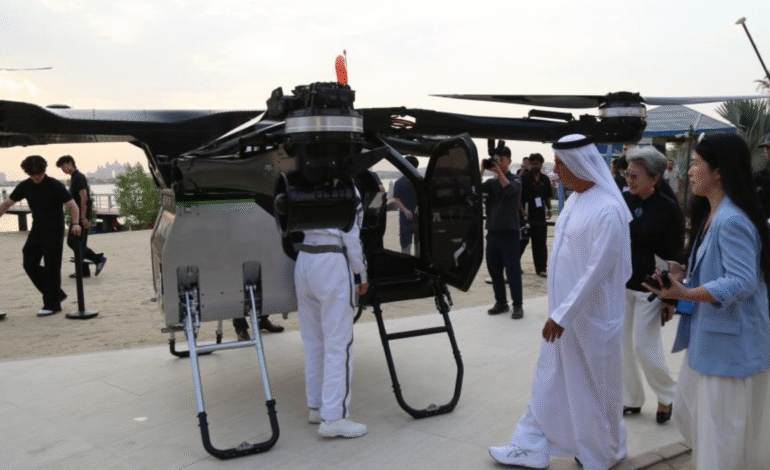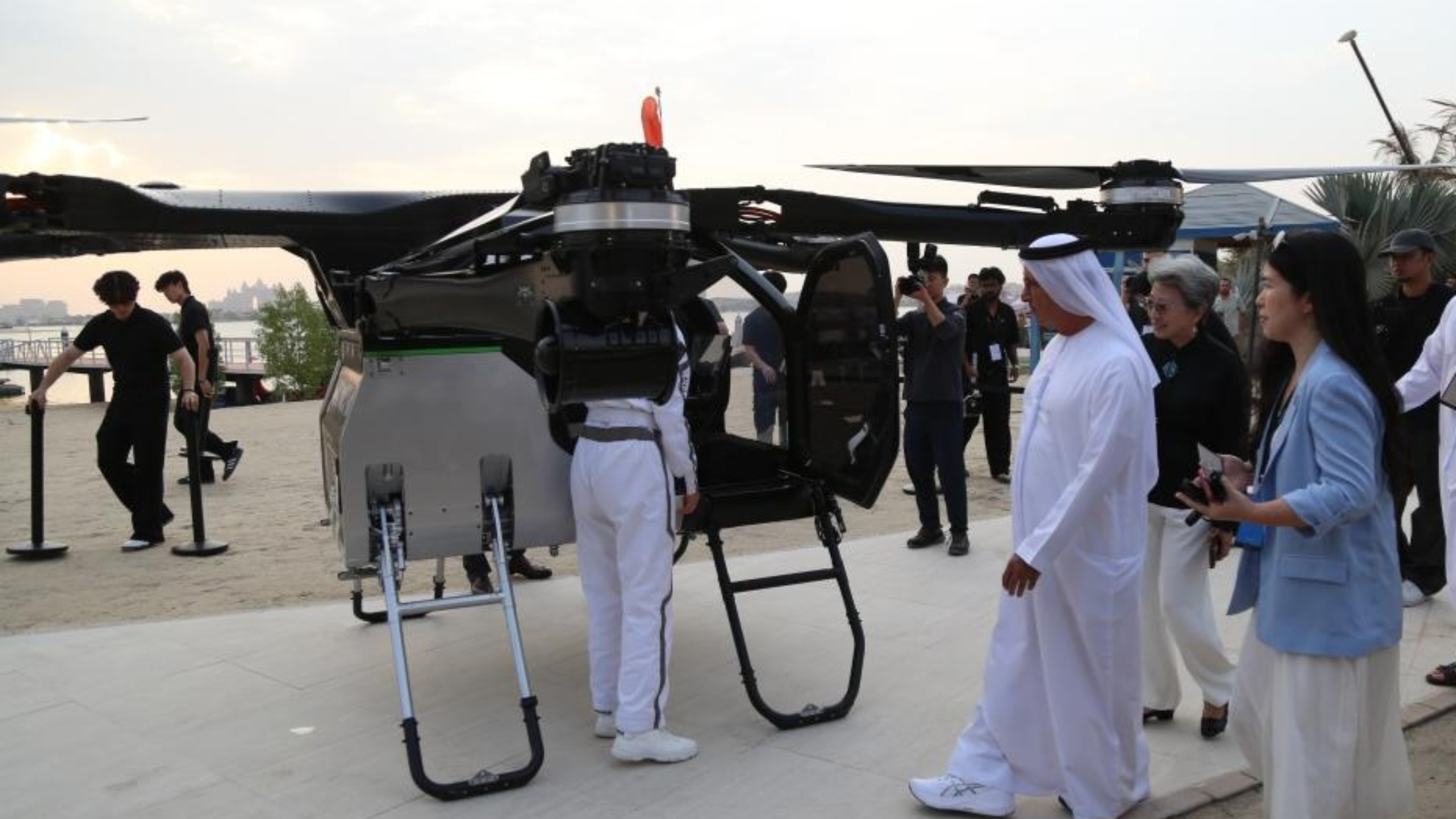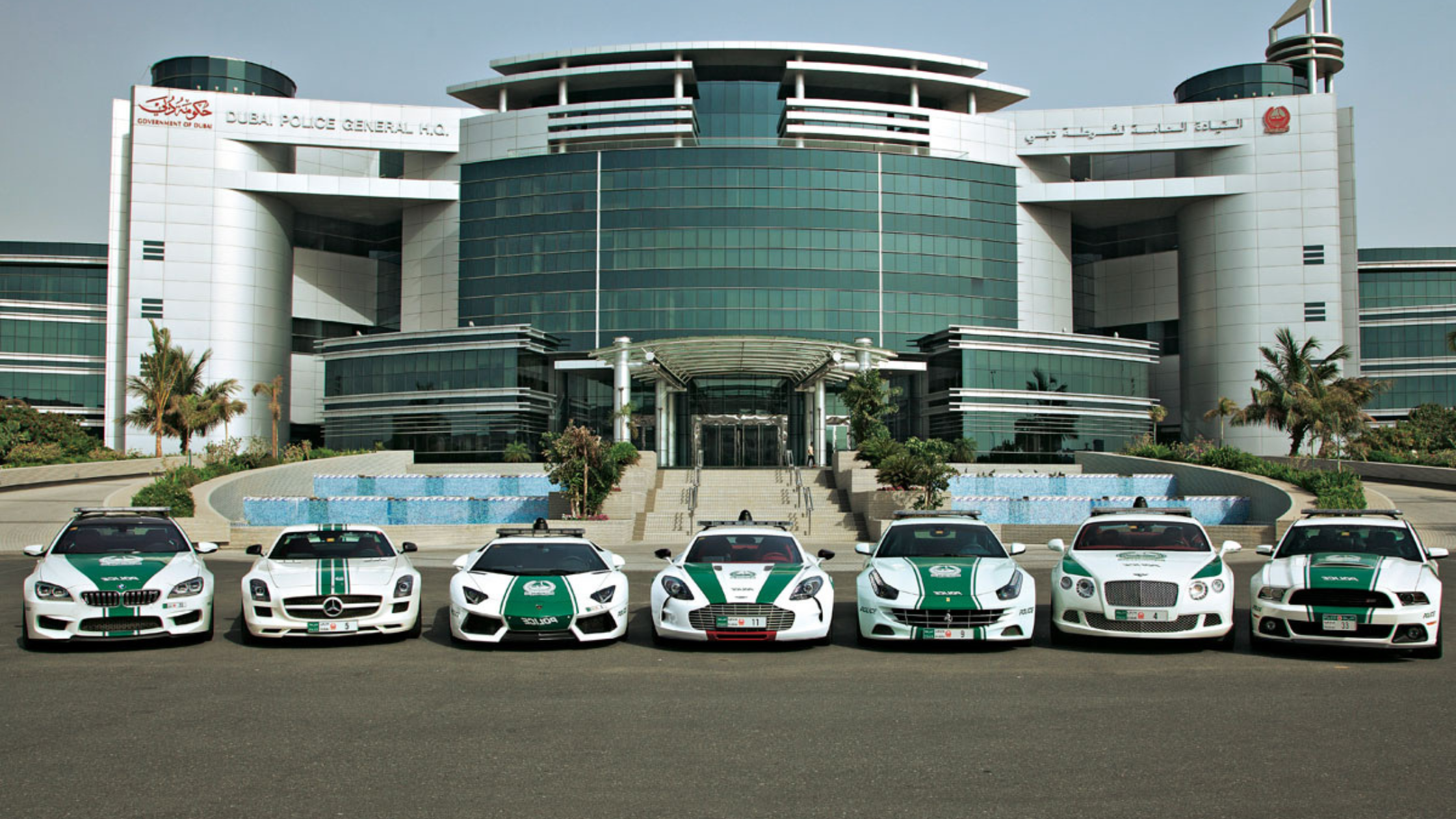Flying Cars Take Off in Dubai as Xpeng Aeroht Leads the Future

The dream of flying cars has always excited people around the world. What once felt like science fiction is now becoming a real part of life — especially in the Middle East. In Dubai, this dream took flight when Xpeng Aeroht, Asia’s biggest flying car maker, successfully completed the first public manned flight of its futuristic Land Aircraft Carrier.
This major event in Dubai wasn’t just about technology — it showed how the UAE and the Gulf region are leading the way in future transport. With 600 new flying car orders from major companies across the GCC, the idea of flying cars in daily life is now closer than ever.
Dubai Takes the Lead in Flying Car Innovation
Dubai has always been a city known for turning ambitious ideas into reality. From self-driving taxis to smart traffic systems, it has never been afraid to explore what’s next in mobility. Now, Dubai has taken another bold step forward with Xpeng Aeroht’s successful manned flight demonstration.
The event took place in front of government officials, business leaders, and tech enthusiasts, showing that Dubai is ready to welcome this revolutionary technology. The Land Aircraft Carrier, which can drive on roads and fly in the air, represents a new era of smart transportation.
By hosting this first public flight outside China, Dubai proved once again that it is the testing ground for global innovation. The city’s open support for such projects continues to attract the world’s top technology companies and visionary investors.
Massive GCC Orders Show Strong Regional Interest
Soon after the flight, Xpeng Aeroht announced a record 600 new orders for its flying car from companies across the Gulf Cooperation Council (GCC). These included the Ali & Sons Group (UAE), Almana Group (Qatar), ALSAYER Group (Kuwait), and the Chinese Business Council in the UAE.
This is the largest single order of flying cars ever made outside China, showing how quickly the Gulf is embracing future technology. In total, Xpeng Aeroht now has over 7,000 pre-orders worldwide, proving that interest in flying cars is growing fast.
The company plans to start deliveries by 2026, with consumer sales beginning in the Middle East as early as 2027. This timeline fits perfectly with the UAE’s and Saudi Arabia’s vision to build advanced, tech-driven cities powered by sustainable mobility.
How the Land Aircraft Carrier Works
The Land Aircraft Carrier is more than a car — it’s a complete travel system. Designed to switch easily between driving and flying, it combines smart engineering with high-end technology.
The vehicle has a main car, also known as the “mothership,” and a detachable air module that fits into its trunk. When needed, this module can detach and take off vertically, turning the car into a flying vehicle. Once it lands, it can reattach to the car and continue the journey on the road.
This flexible design allows users to travel anywhere — from city streets to open skies — in one vehicle. The air module uses AI navigation, flight sensors, and stabilization technology to ensure safe and smooth travel.
By combining electric power, drone technology, and artificial intelligence, Xpeng Aeroht has created a practical version of a flying car that could soon become a common sight in modern cities.
Dubai’s Role in Building the Future of Smart Mobility
Dubai’s support for advanced transport technologies made it the perfect place for Xpeng Aeroht’s first international flight. The city has already tested self-driving vehicles, air taxis, and AI-powered public transport systems.
The Dubai Roads and Transport Authority (RTA) has been exploring urban air mobility for years. With the success of Xpeng Aeroht’s flight, Dubai is moving closer to its goal of introducing commercial flying cars and taxis by the end of the decade.
Other GCC countries, including Qatar, Saudi Arabia, and Kuwait, are also investing in smart city projects that include electric and aerial transport systems. These efforts will help the Middle East become a leading region for urban air mobility (UAM) — an industry that experts say could reach over $1 trillion globally by 2040.
Building the World’s First Flying Car Factory
To meet growing demand, Xpeng Aeroht is building the world’s first intelligent flying car factory in Guangzhou, China. This advanced facility can produce up to 10,000 vehicles per year and will be ready to supply the global market by 2026.
The factory uses robotic automation, precision assembly, and AI-driven quality control to ensure each vehicle meets the highest safety standards. It will also serve as a hub for ongoing research and development to make flying cars even more efficient and affordable.
This large-scale production marks a turning point for the flying car industry, which until now has mostly focused on prototypes and small-scale trials. With Xpeng Aeroht’s factory, mass production of aerial vehicles is finally becoming a reality.
Safety and Regulation: Preparing the UAE’s Skies
Safety is the top priority for both Xpeng Aeroht and UAE authorities. The General Civil Aviation Authority (GCAA) has already started developing regulations for urban air mobility, including air routes, pilot licensing, and vehicle certification.
These efforts ensure that when flying cars officially launch, they will operate within strict safety frameworks. Dubai’s 5G networks, AI traffic control systems, and advanced communication infrastructure will also support safe and efficient flying vehicle operations.
The combination of strong regulation, cutting-edge technology, and proactive government support makes the UAE one of the most ready countries in the world for flying car deployment.
Economic Benefits: How Flying Cars Support the GCC’s Vision
The introduction of flying cars is not just about convenience or innovation — it’s about economic transformation. The UAE and other GCC nations are focusing on diversifying their economies by investing in technology, innovation, and green energy.
Flying cars align perfectly with this vision. They can boost tourism, create new job sectors, and attract global investors interested in future mobility.
Industries that could benefit include emergency response, logistics, cargo transport, air tourism, and luxury commuting. By supporting flying car development, Gulf countries are opening doors to new economic opportunities and high-tech industries that can drive long-term growth.
This move also fits into UAE Vision 2031 and Saudi Vision 2030, which aim to build smart, connected cities powered by clean and sustainable technologies.
The Middle East as a Key Market for Personal Aerial Vehicles
The Middle East has always been quick to adopt new technology, especially in luxury transport. From supercars to electric vehicles, the region’s consumers value innovation and comfort.
Flying cars are expected to attract a similar audience — especially among high-income individuals, property developers, and forward-thinking companies. By 2027, customers in Dubai, Riyadh, and Doha may be able to buy or lease the Land Aircraft Carrier for personal or corporate use.
Regional distributors such as Ali & Sons Group will play a vital role in building the local infrastructure required to support these vehicles. This includes training pilots, creating maintenance facilities, and developing dedicated air hubs for safe takeoffs and landings.
Public Readiness and What Comes Next
While the idea of flying cars might still seem futuristic, public interest is rising fast. After the Dubai demonstration, many people in the region began to see the concept as achievable rather than imaginary.
The 600 GCC orders show that businesses and investors believe in this future. Once regulations are finalized and public infrastructure is ready, consumer sales will begin, making the Middle East one of the first regions in the world to use flying cars daily.
By 2027, the Gulf may be leading the world in personal and commercial aerial transport, proving once again that it is the global capital for innovation and progress.
Xpeng Aeroht: A Global Leader in Aerial Mobility
Xpeng Aeroht, a subsidiary of Xpeng Motors, has spent years developing electric vehicles and aerial technologies. Its team of more than 1,000 engineers works across areas like aerodynamics, battery efficiency, AI control, and aviation design.
The company’s focus on safety, reliability, and large-scale production sets it apart from other flying car startups. It has earned support from global investors and regional partners who share the same belief — that the future of mobility belongs to the skies.
Its partnership with GCC companies also strengthens the growing China–Middle East cooperation in technology and innovation, opening new opportunities for both sides in manufacturing and smart transport development.
The Skies Above Dubai Mark a New Beginning
The sight of a flying car soaring over Dubai marks a turning point in human innovation. What once existed only in futuristic movies is now becoming part of daily reality.
The successful flight of Xpeng Aeroht’s Land Aircraft Carrier shows that the Middle East is ready to lead the next phase of global transportation. With large-scale production, regional investment, and strong government backing, flying cars will soon be part of the Gulf’s skyline.
As we approach 2026 and beyond, Dubai is not just shaping the future of the UAE — it’s shaping the future of how the world moves.







